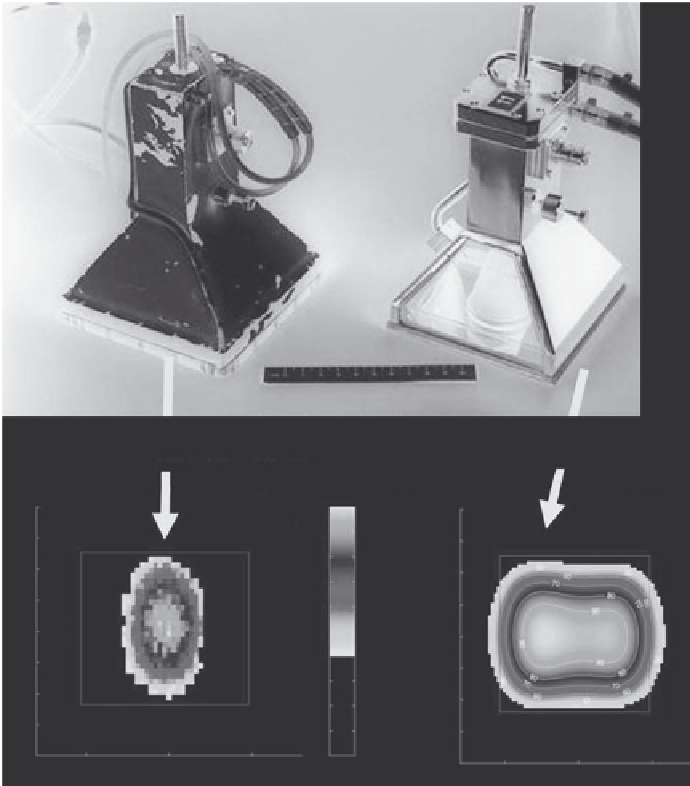Biomedical Engineering Reference
In-Depth Information
Conventional horn
Lucite cone antenna
8
6
4
2
0
-2
-4
-6
-8
100
90%
8
30%
90
80
70
60
50
40
30
20
10
0
6
4
2
0
-2
-4
-6
-8
-5
0
x (cm)
5
-5
0
x (cm)
5
FIGURE 8.3
Conventional waveguide and Lucite cone waveguide antennas with the different relative SAR distribution as measured at 1 cm
depth in a muscle-equivalent tissue indicated below the applicator [42].
waveguide applicators, the LCA distinguishes itself by the high
ratio of effective field size to the aperture opening (area with a
relative SAR > 50% divided by the aperture area of the wave-
guide; see Figure 8.3). For the LCA this ratio is around 80%
with the 50% iso-SAR contour extending outside the aperture
area at the side of the Lucite wall [44]. In comparison to the
effective field size of a conventional waveguide applicator, the
heating area of the LCA is ±2.5 times larger [45], consequently
the applicator target volume of a single LCA is 10 × 10 × 4 cm
3
.
LCAs can be combined in array configurations to effectively
cover the whole radiotherapy field (from 10 × 10 to 20 × 30 cm
2
).
The LCA forms the backbone of the Rotterdam superficial
hyperthermia system, which consists of six remotely controlled,
solid-state amplifiers operating at 434 MHz, each capable of
delivering an RF output of 200 W. Temperature is continu-
ously measured with 32 fiber-optic temperature sensors. The
graphical user interface available to the HT technician during
treatment uses graphs to shows the temperature evolution over
time and a projection of measured temperatures on the patient
target area.
For recurrent breast tumors with depths up to 4 cm and extend-
ing over large areas of the chest wall, arrays of Lucite cone or
current sheet applicators (see Section 8.5.1.1.2) are the only appli-
cators able to heat such tumors with good spatial SAR control.
Advantages: robust applicator with reliable performance;
effective field area approaches aperture size;
spatial power control in array; penetration
depth comparable to that of free space at
434 MHz; uniform performance between
applicators; high RF-power output possible;
versatile use over all body parts.
Disadvantages: rigid and large applicator, size may com-
promise setup; applicator mounting system
required.
8.5.1.1.2 Current Sheet Applicators
The current sheet applicator (CSA) has a very compact design,
and the radiofrequency (RF) electromagnetic energy is induc-
tively coupled to the tissue. The basic principle of the CSA was

